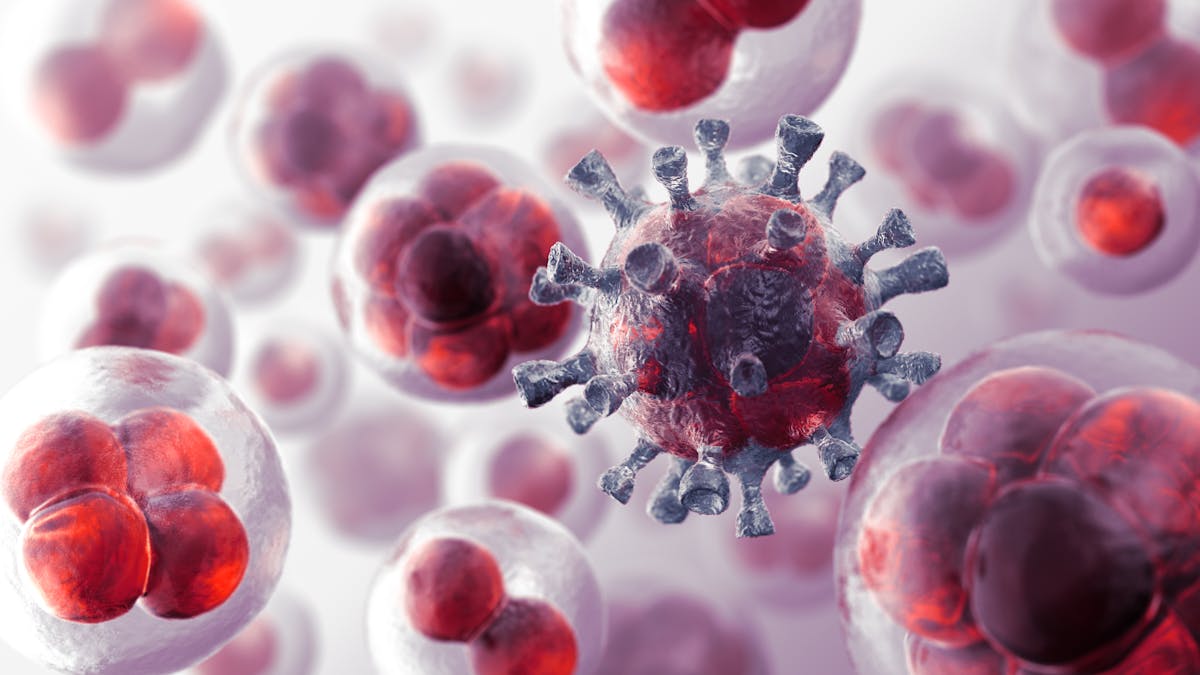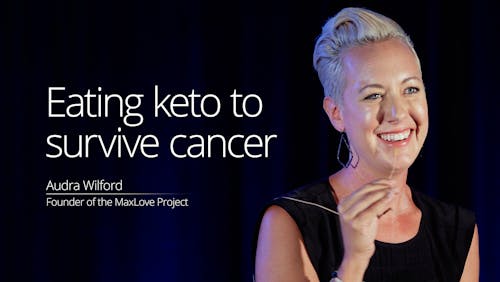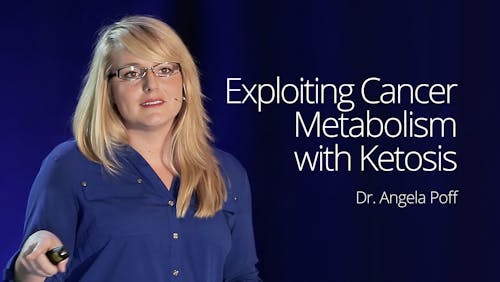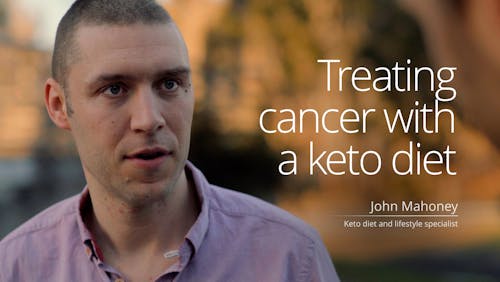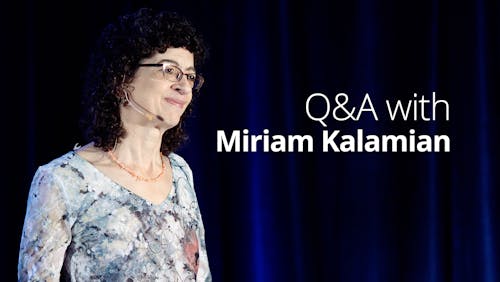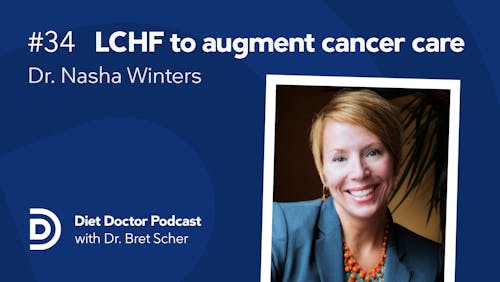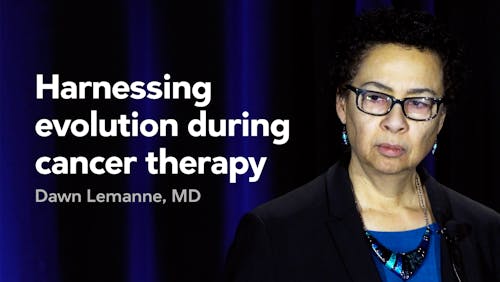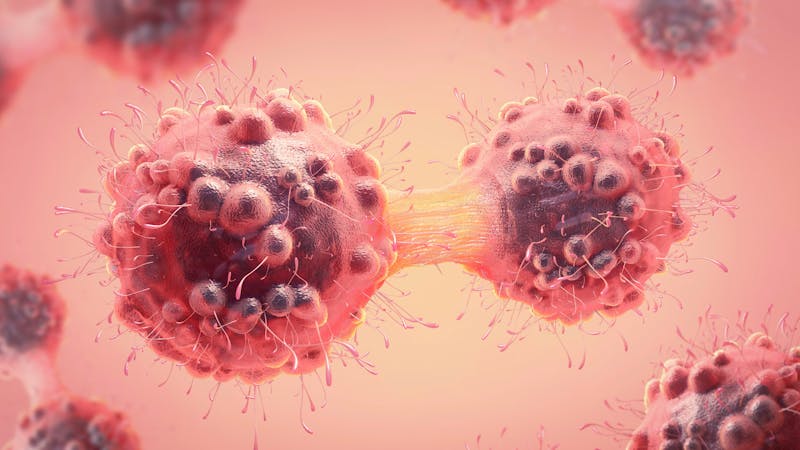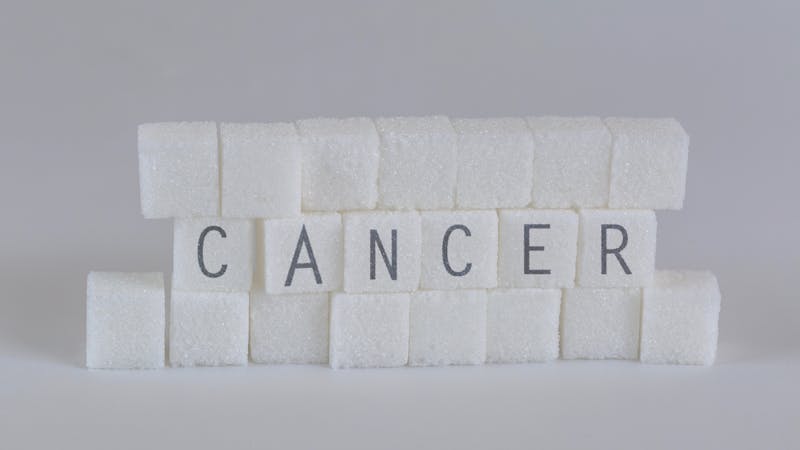Diet and cancer: What we know and what we don’t
Humans have been attempting to link diet and health since the dawn of time, or at least the dawn of written records. Around 400 BC, Hippocrates described treating minor illnesses with diet.1 He also mentioned using laxatives, heavy metals and blood-letting for more serious conditions such as “karkinomas.” Nonetheless, historical evidence suggests that, for thousands of years, food has been viewed as a collection of nutrients and chemicals that is more than a source of energy. It can impact health, as well.
While the view that diet is linked to health has persisted for millennia, connecting the two has not been so easy. In fact, identifying the links between diet and cancer has been one of the most difficult tasks of modern science. This difficulty has not stopped many news and online sources (and even researchers) from claiming that certain diets will prevent, treat, or even cure cancer. But is the food-cancer link evidence-based?
In this guide, we’ll look at what we know — and what we don’t know — about food and cancer.
1. How did modern medicine’s infatuation with diet, fat, and cancer begin?
Why is the relationship among lifestyle, diet, and cancer so difficult to determine? The story begins not too long ago, in the 1950s.
Several scientific figures had a remarkable impact on medical research during the twentieth century. One of these figures was UK physician Sir Richard Doll. After revealing the link between irradiation and leukemia, Doll and his mentor Austin Bradford Hill confirmed the link between tobacco smoke and lung cancer.2 (Others had been part of the discovery as well, though Doll and Hill have received the most credit.)
The latter association would bring Doll widespread fame within the medical field, and eventually knighthood. A major irony was that his findings were confirmed in a study of over 40,000 British physicians, revealing a strong link between smoking and lung cancer, premature death, and an array of other health issues.3
Doll immediately stopped smoking (yes, he was a smoker at the time) and began to ride the wave of stardom. His major follow-up study then set the world of nutritional science in motion for decades to come – so much so that even Doll himself could not stand in its way.
In 1975, Doll, along with Australian epidemiologist Bruce Armstrong, analyzed the dietary and lifestyle habits of individuals in 32 countries in an effort to find links between certain behaviors and cancer. Several “links” stood out in the data; among the most famous associations were red meat and colon cancer, fish consumption and stomach cancer, drinking coffee and kidney cancer, and dietary fat and breast cancer.4
Yet, unlike Doll’s and other prior studies that demonstrated a very strong association between smoking and lung cancer, Doll suggested that this study’s correlations be interpreted with restraint: ‘Given the many weaknesses of this method in terms of the quality of the data…it is clear that these and other correlations should be taken only as suggestions for further research and not for evidence of causation or as bases for preventive action.’5
Although Doll believed the data were strong enough to propose links between certain dietary components and cancers, he acknowledged that there may have been unaccounted-for environmental variables that corrupted the data. We can only speculate what those variables might be (e.g. lack of exercise, unhealthy subtypes of each macronutrient, sedentary jobs, etc), but the point is that we should place this study in an appropriate context, giving it weight commensurate with the weaknesses of its data.
Videos about cancer
2. Does dietary fat cause breast cancer?
Dr. Walter Willett, an MD at the Harvard School of Public Health, who also holds a doctorate in epidemiology, attempted to prove the link between dietary fat and breast cancer from Doll’s study by utilizing a 61-question dietary questionnaire in a large group of nearly 90,000 female nurses. The results were analyzed, and estimates of total fat, saturated fat, linoleic acid (a polyunsaturated fat found in vegetable oil), and cholesterol within the nurses’ diets were calculated and compared with rates of medical issues, like cardiovascular disease and cancer.
Willett’s group went on to publish three sets of findings on links between dietary fat and breast cancer. The first publication, titled Dietary Fat and the Risk of Breast Cancer, released in 1987, showed a trend toward decreased risk of breast cancer with higher rates of dietary fat consumption, but this was not statistically significant.6 A study published five years before had similarly revealed no relationship.7
Willett’s group would then combine the data from seven studies, analyzing data that included over 337,000 women and 4,980 cases of breast cancer. Yet the results, once again, revealed no link between dietary fat and the risk of breast cancer.8
The scientists cautioned that the length of follow up in their initial study was possibly too short to detect an increased risk of cancer, or that even the lowest dietary fat intakes were simply too high to lower the risk.
With nearly 15 years of follow up, a repeat analysis, now including women consuming less than 20% of their diet as fat (remember, this was after decades of endless low-fat recommendations), found no significant change in the incidence of breast cancer.9
Since Willett’s initial massive study, numerous other studies have attempted to link dietary fat with breast and other cancers. Studies remain negative, and even Willett has publicly stated that “support for a major relationship between fat intake and breast cancer risk has weakened considerably as the findings from large prospective studies have become available.”10
Based on the evidence to date, there is likely no benefit to lowering fat intake to reduce the risk of developing breast cancer.
3. Do red and processed meat cause cancer?
Meat has taken the lion’s share of blame when it comes to food with the potential to cause cancer. Specifically, many observational studies have linked meat consumption to a higher risk of colon cancer.11 However, much like Doll and Armstrong’s worldwide epidemiologic study, the link has been inconsistent and of low magnitude.
Many sources reporting on the health issues of red meat and a potential link to cancer often quote a report from the World Health Organization’s (WHO) International Agency for Research on Cancer (IARC).12 What is often under-appreciated is that this WHO report is not actually a study, but rather the interpretation of the overall science by a specific group of individuals. It is notable that the authors of the WHO report repeatedly state that the evidence linking red meat to colorectal cancer is weak and inconsistent, and the magnitude of any real effect may not be very large.
Furthermore, the few randomized trials available have found that diets restricted in red meat have little to no effect on the risk of colon cancer.13 Several randomized studies have assessed the ability of a low-fat, high-fiber, and low red and processed meat diet to reduce precancerous adenomas, known as colon polyps. All revealed no reduction in polyps in the dietary intervention arms.14 Notably, these low-fat groups were randomized against a western diet arm, yet still revealed no benefit.
Also confounding this potential link is the fact that red meat and processed meat are quite different entities and should not be conflated. Even the WHO recognizes that red meat and processed meat do not pose equivalent risks.15
When we look into how red meat might cause colorectal cancer, there are some compelling mechanisms revealed in animal studies that explain why charring or burning meat (which creates potentially carcinogenic chemicals such as polycyclic aromatic hydrocarbons and heterocyclic aromatic amines) could increase the risk.16 However, this points toward charred meat as the carcinogen – not necessarily red meat itself.
The potential of burnt food to become carcinogenic in the colon is a major reason why the colon cancer-red meat link has been studied so vigorously.17 Yet, even this association has yielded a potential overall increased risk of colon cancer that is “very small, and the certainty of evidence is low to very low.”18
While we know that meat is a high-quality protein source that also provides a plethora of vitamins and minerals, its relationship to cancer remains backed by weak and conflicting evidence. Thus, for those seeking a complete diet, purposefully excluding meat to reduce the risk of cancer is not backed by compelling evidence and could even lead to inadequate nutrition. The strongest conclusion we can draw — based on the evidence — is that eating charred red meat or processed meat may increase the risk more than eating red meat in general (although the risk is still very low in absolute terms and based on weak evidence).
For more information on this topic, please check out our guide:
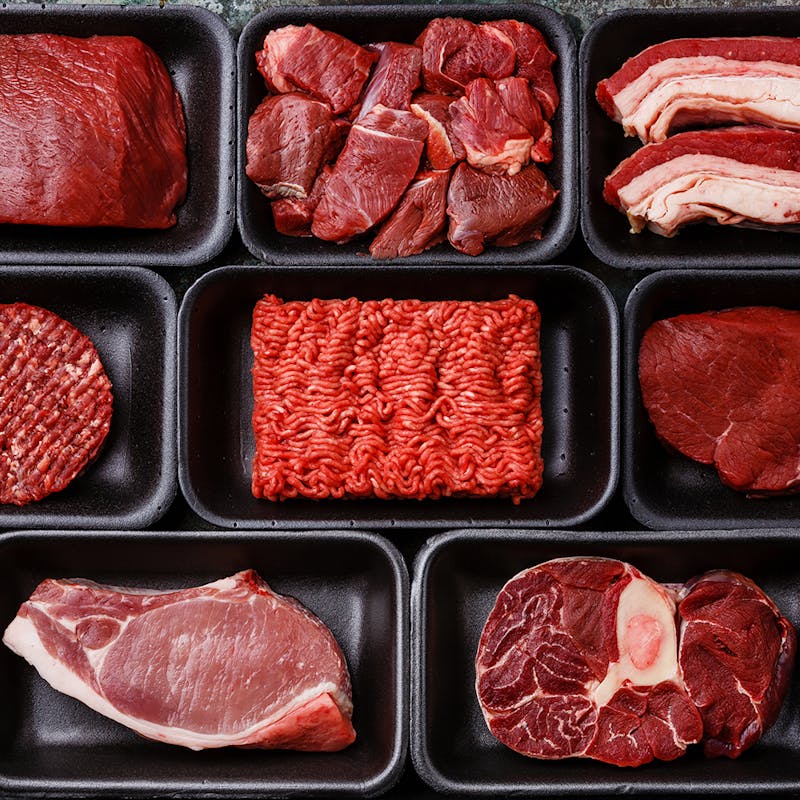
Guide to red meat – is it healthy?
GuideHere is our guide to what we currently know about red meat, so you can make an informed decision about whether to include it in your own diet and, if you do, how much of it you may decide to eat each week.
4. Do any foods cause any sort of cancer?
With the body of data that currently exists, it is challenging to prove that any particular food causes cancer. Most studies are epidemiologic, which can suggest associations but cannot prove causation. In addition, these studies use food frequency questionnaires, which are notoriously unreliable. Even if some of the data are of reasonable quality, the magnitude of any relationship found between food and cancer is typically very small; this makes it impossible to determine whether the link is real or by chance, or whether it is due to an unaccounted-for variable.
The issues with epidemiologic studies and the back and forth media-frenzy of misleading headlines they produce has been scientifically parodied in the study “Is everything we eat associated with cancer? A systematic cookbook review.”19 This study revealed that it is possible to find evidence for both a positive and negative effect of most foods when it comes to population studies and cancer.20 However, the vast majority of these claims are based on very weak statistical evidence.
The following four levels of support would be necessary to prove a strong link between certain foods or eating patterns and cancer:
- Population/epidemiologic study support
- Mechanistic support (i.e. a mechanism exists to explain the relationship)
- Animal study support
- Human randomized controlled trial support
It is imperative to note that all four criteria have never been fulfilled to definitively link any eating pattern to any type of cancer.
5. How could foods cause cancer?
Food is essential for life; how can we compare it with other known carcinogens like tobacco smoke or car exhaust?
A food could theoretically increase our risk of cancer if it causes a tangible change within the body that promotes an environment conducive to a cell becoming cancerous.
The following mechanisms describe how foods could possibly cause cancer:
- The food and/or cooking process could contain or produce a carcinogen that damages our cells or a part of the body. This repetitive damage could eventually leave this area more prone to cancer (much like repeated injury from cigarette smoke in the lining of the lungs).
- The food or cooking technique could contain/produce a chemical or free radical that damages DNA, which could lead to the expression or mutations of genes that promote unchecked cellular replication, growth, and eventually cancer.
- The food could lead to a metabolic environment that makes the induction and growth of cancer cells more favorable, like obesity or type 2 diabetes. For example, in obesity, diabetes, or a diet that promotes elevated blood glucose and insulin, normal cells may receive messages that activate cellular growth and reproduction pathways that, over time, may call for their unrestrained growth and could increase the risk of eventual conversion to a cancerous cell. Such a growth stimulus has been described as a “Hallmark of Cancer.”21
When considering the mechanisms by which a food could be harmful, we must also consider the potential beneficial effects of that food. For instance, low-carb, high-fat diets can reduce body fat, improve type 2 diabetes and insulin sensitivity, and improve overall metabolic status, all of which can mitigate cancer risk.22 By reducing these cancer risk factors, we could hypothesize that a healthy, low-carb, high-fat diet could potentially be protective against cancer. This contrasts with the so-called Standard American Diet, comprised of high carbs, high fat, and highly processed and refined foods.
When thinking about broad categories of macronutrients, we must also consider that there can be significant heterogeneity within a given category. For example, when discussing fats, unsaturated fats in the form of vegetable oils have been used to promote cancer in animal models for decades.23These types of fats often contain free radicals that can produce oxidative damage after consumption, which, in some cases, can impart lethal damage upon cells or DNA. This can lead to cancer.24
But does this translate to a potential increased risk in humans? There are some observational studies showing associations between high omega-6 polyunsaturated fatty acid consumption and cancer.25 However, pooling all observational data together generally shows no link between the two.26
With respect to randomized studies in humans, one 1960s trial showed a non-statistically significant trend toward increased death from cancer in a group of men assigned to a diet high in polyunsaturated vegetable oils. But, because of the failure to reach statistical significance, as well as the fact that there were more non-adherers to the diet in the experimental arm, no strong conclusions could be drawn from those results.27 Prior to that study, other similar trials were all negative.28
Vegetable oils’ possible link to cancer is a great example of the requirement to interpret all data, keeping in mind that a few positive observational studies do not prove cause and effect.
For more information about vegetable oils, please check out our guide:
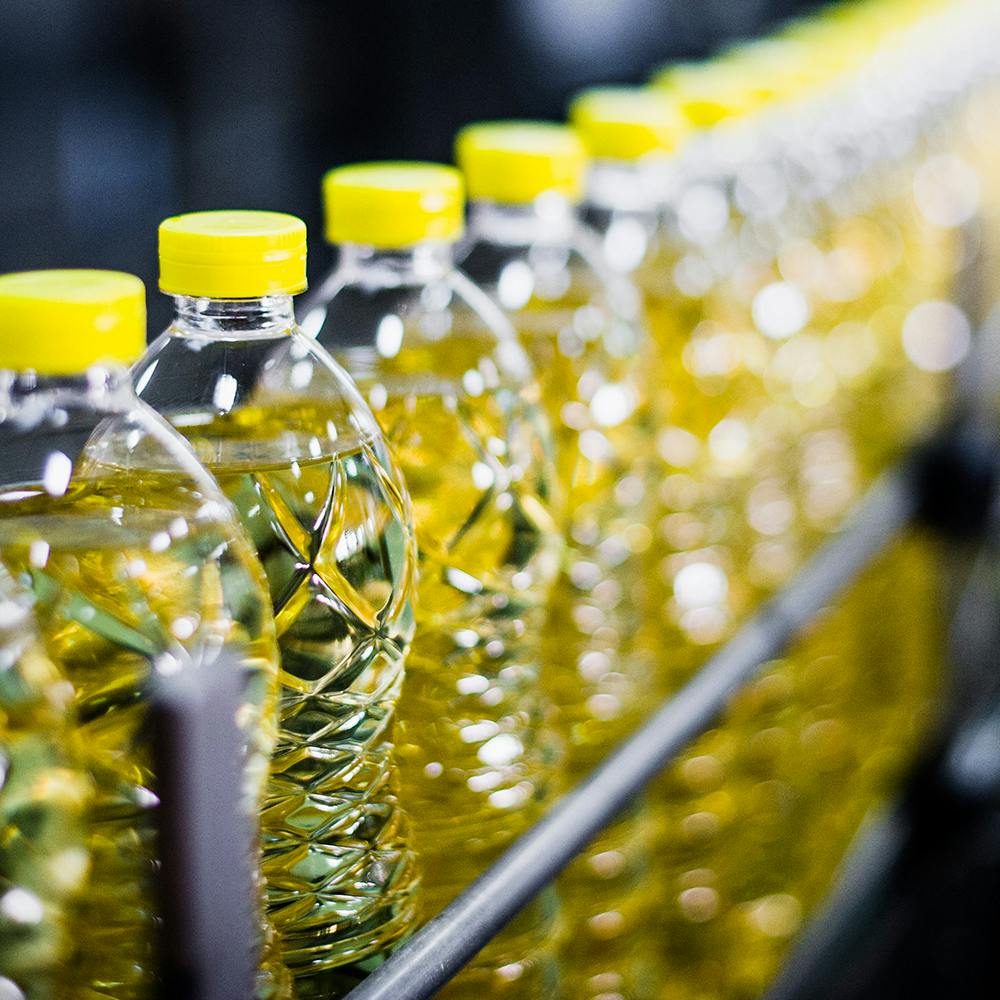

Vegetable oils: What we know and what we don’t
GuideVegetable oils have quickly become a major source of calories in our food supply. Is that a good thing? To find out, let’s review what we know, and what we don’t know.
6. Do fruits and vegetables fight cancer?
While red meat has had a reputation as a dangerous dietary component for the past several decades, fruits and vegetables have received praise for being anticancer. The studies, however, have been inconsistent and do not definitively affirm that fruits and vegetables reduce the risk of cancer.
As with red meat and cancer, the relationship between fruits and vegetables and cancer is difficult to determine. Again, this is due to epidemiologic data that suffer from all the problems mentioned earlier in this guide.
In addition, it is often hard to account for the influence of confounding variables. For instance, smokers, heavy drinkers, and individuals who rarely exercise – all risk factors for cancer – eat fewer vegetables than nonsmokers, moderate drinkers, and those who exercise.29 Unsurprisingly, these folks are much less healthy, but we cannot determine the extent to which their poor health is due to diets that lack fruit and vegetables.30 Along these lines, similar studies point to a lower risk of all-cause mortality in the vegetable eaters. But again, these data are confounded by social and behavioral issues.31
When looking at all types of chronic diseases, the benefits point even more specifically to vegetables rather than fruit — especially green, leafy vegetables.32 This more narrow anointing of certain vegetables would be consistent with putative mechanisms: green, leafy vegetables can feed and encourage growth of certain bowel bacteria, and these bacteria may help metabolize chemicals or carcinogens that cause downstream harm. In addition, cruciferous vegetables can stimulate our antioxidant defense system, as well as similar pathways that help detoxify potentially cancerous chemicals and hormones.33
Like studies of cancer and other foods, studies looking at fruit/vegetables and cancer are mixed, with some revealing a lower cancer risk, and others showing any difference to be minimal for the identical food.34 Furthermore, studies suggest that the anticancer benefit of vegetables is largest in heavy smokers and drinkers.35
From a mechanistic view this makes sense, as many vegetables enhance our cellular ability to detoxify potentially cancerous chemicals. In other words, these vegetables may be working hard to offset the massive damage from these individuals’ unhealthy behaviors, but the benefits are likely less robust or absent for those who follow a reasonably healthy lifestyle.
Breast cancer
A meta-analysis of 26 studies assessing the risk of breast cancer in women from 1982-1997 found no benefit of fruit consumption in reducing the risk of breast cancer, while vegetables were associated with a 25% lower relative risk.36 Additionally, an analysis specifically in premenopausal women revealed a similar potential benefit with vegetables, but not fruit.37
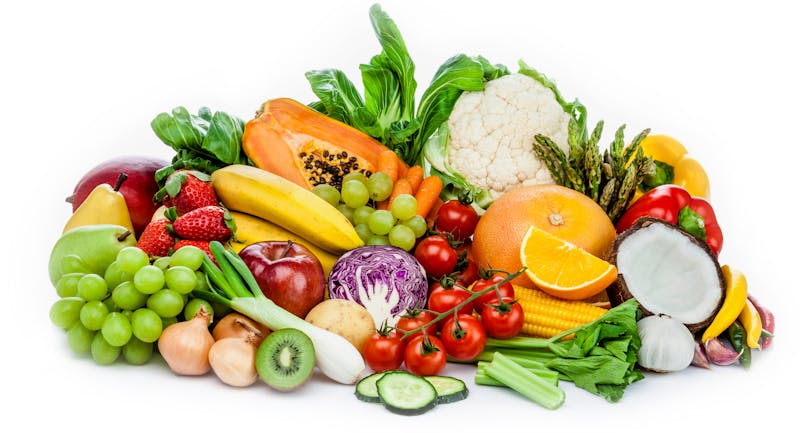



Looking at a paper that performed a pooled analysis of multiple cohort studies, no benefit of fruits or vegetables was seen in over 350,000 women with respect to their risk of breast cancer.38 Multiple other studies echoed these findings, revealing no reduction in breast cancer or any cancer with fruit or vegetable consumption.39
There are other data suggesting that when a food is eaten earlier in life it may be protective against breast cancer.40 However, the point has been made: the data are inconsistent, which does not allow us to conclusively link a higher vegetable or fruit intake in adults with a lower risk of breast cancer.
Colon cancer
Fruits and vegetables also lack conclusive support for reducing the risk of colon cancer. A pooled analysis of 14 studies revealed no reduction in colon cancer in people who reported high fruit and vegetable consumption.41 One positive epidemiologic study showed an increased risk of colon cancer in those who ate less than 1.5 servings per day compared to those who ate more than 2.5 servings per day.42
Much like meat, the issue of different types of vegetables and preparation of these vegetables may impact the results of these studies. Were they grilled? Steamed? What were they cooked with? Studies have yet to assess this relationship, limiting the conclusions we can draw.43
Additionally, the type of vegetable and growing conditions can greatly affect the potentially beneficial chemicals present within the vegetable. For example, organosulfurs, compounds that promote cellular detoxification and antioxidant production, are found in onions, garlic, broccoli, cabbage, and other vegetables, but amounts vary considerably among varieties.44
Despite the general weakness of medical evidence in this area, it is worth highlighting one particular clinical trial that suggests green leafy vegetables may mitigate the presumably very low risk of colon cancer from red meat. The evidence is short-term, uses surrogate endpoints, and requires larger confirmatory trials, but at the same time is encouraging for demonstrating a potentially protective effect.45
Summary of vegetables and cancer
In summary, the clinical research evidence for vegetables being protective against cancer is inconclusive. Some studies suggest that green and cruciferous vegetables provide a potential benefit, but this relationship has not been strongly proven.
Non-starchy vegetables provide a plethora of vitamins and nutrients. When eaten as part of a diet low in simple sugars and other harmful foods, these vegetables likely contribute to our health with very little, if any, risk. Furthermore, from a purely mechanistic point of view, there are plenty of ways in which vegetables could lower our risk of cancer, especially for those of us living in urban or polluted settings with unavoidable exposure to carcinogenic chemicals on a daily basis.
For more, in-depth detail about the potential cancer-fighting mechanisms of fruits and vegetables, click the “read more” button.
7. What can we say with certainty?
Not nearly as much as we would like, unfortunately. Based on population studies, limited controlled trials, cellular mechanisms, and animal studies, we have some clues about the relationship between food intake and cancer risk.
As discussed earlier in this article, we can surmise that some foods (e.g. processed meat) and cooking methods (e.g. high-temp grilling of meat) may slightly increase the risk of certain cancers. On the other hand, foods that increase cellular and DNA repair, promote carcinogen detoxification, and foster a healthy immune system (e.g. certain vegetables), may lower the risk of cancer. And, finally, many foods and macronutrients that have previously been implicated in carcinogenesis (e.g. fats) may have no effect at all on the risk of cancer.
As discussed previously, a higher-fat and lower-carbohydrate diet has been shown dozens of times in randomized studies to result in weight loss, lower insulin levels, and improved insulin sensitivity for individuals with type 2 diabetes or prediabetes.53 Thus, a low-carbohydrate diet with plenty of vegetables to help nurture bowel bacteria and detoxify potentially cancerous chemicals seems prudent based on the available, conflicting studies.
However, returning to Richard Doll – remember the important warning he left us with about the food-cancer connection before he died in 2005 at age 92:
“Given the many weaknesses of this method [nutritional epidemiology] in terms of the quality of the data, allowances for latent periods and the uncertainty…it is clear that these and other correlations should be taken only as suggestions for further research and not as evidence of causation or as bases for preventive action.”
Start your FREE 7-day trial!
Get instant access to healthy low-carb and keto meal plans, fast and easy recipes, weight loss advice from medical experts, and so much more. A healthier life starts now with your free trial!
Start FREE trial!Diet and cancer: What we know and what we don’t - the evidence
This guide is written by Dr. Colin Champ, MD and was last updated on June 19, 2025. It was medically reviewed by Dr. Michael Tamber, MD on January 4, 2022.
The guide contains scientific references. You can find these in the notes throughout the text, and click the links to read the peer-reviewed scientific papers. When appropriate we include a grading of the strength of the evidence, with a link to our policy on this. Our evidence-based guides are updated at least once per year to reflect and reference the latest science on the topic.
All our evidence-based health guides are written or reviewed by medical doctors who are experts on the topic. To stay unbiased we show no ads, sell no physical products, and take no money from the industry. We're fully funded by the people, via an optional membership. Most information at Diet Doctor is free forever.
Read more about our policies and work with evidence-based guides, nutritional controversies, our editorial team, and our medical review board.
Should you find any inaccuracy in this guide, please email andreas@dietdoctor.com.
International Journal of Cancer 2014: A brief history of cancer: Age‐old milestones underlying our current knowledge database [overview article; ungraded] ↩
British Medical Journal 1950: Smoking and carcinoma of the lung- preliminary report [summary of observational studies with high RR; weak evidence] ↩
British Medical Journal 1956: Lung cancer and other causes of death in relation to smoking; a second report on the mortality of British doctors. [observational study with high RR meeting the Bradford Hill criteria; moderate evidence] ↩
International Journal of Cancer 1975: Environmental factors and cancer incidence and mortality in different countries, with special reference to dietary practices [nutritional epidemiology study; very weak evidence] ↩
The following review shows in over 100 studies, the relative risk for smoking and lung cancer is between 15 and 30, meaning a 1500 to 3000% increased risk.
Journal of the National Cancer Institute 2004: Tobacco and cancer: Recent epidemiological evidence [overview article; ungraded] ↩
New England Journal of Medicine 1987: Dietary fat and the risk of breast cancer [nutritional epidemiology study; very weak evidence] ↩
American Journal of Epidemiology 1982: Diet in the epidemiology of breast cancer [nutritional epidemiology study; very weak evidence] ↩
New England Journal of Medicine 1996: Cohort studies of fat intake and the risk of breast cancer — A pooled analysis [very weak evidence] ↩
JAMA 1999: Association of dietary intake of fat and fatty acids with risk of breast cancer [nutritional epidemiology study; very weak evidence] ↩
Oncologist 2000: Diet and cancer [overview article]
Journal of Internal Medicine 2001: Diet and breast cancer [overview article]
The Woman’s Health Initiative (WHI) randomized over 48,000 women to either a control arm or an intensive behavior modification group, which included a low-fat diet with plenty of fruits and vegetables and frequent motivational meetings.
Even though the low-fat group received countless interventions to improve their overall health, no difference in breast cancer was seen between the groups.
JAMA 2006: Low-fat dietary pattern and risk of invasive breast cancer [randomized controlled trial; moderate evidence]
However, this 2020 study looking at the WHI cohort after nearly 20 years of follow-up did find a tiny reduction in the risk of death attributable to breast cancer in the low-fat intervention arm. Given the extremely small reduction in absolute risk (0.010%), it’s difficult to use this study as the basis for recommending a low-fat diet on a population-wide level:
Journal of Clinical Oncology 2020: Dietary modification and breast cancer mortality: long-term follow-up of the women’s health initiative randomized trial [randomized controlled trial; moderate evidence]
↩Oncotarget 2017: Red and processed meat consumption and colorectal cancer risk: a systematic review and meta-analysis [systematic review of nutritional epidemiology studies; very weak evidence]
International Journal of Cancer 2016: Meat subtypes and their association with colorectal cancer: Systematic review and meta‐analysis [systematic review of nutritional epidemiology studies; very weak evidence]
International Journal of Epidemeology: Diet and colorectal cancer in UK Biobank: a prospective study [nutritional epidemiology study; very weak evidence] ↩
The Lancet 2015: Carcinogenicity of consumption of red and processed meat [overview article; ungraded] ↩
Annals of Internal Medicine 2019: Effect of Lower Versus Higher Red Meat Intake on Cardiometabolic and Cancer Outcomes: A Systematic Review of Randomized Trials. [strong evidence] ↩
New England Journal of Medicine 2000: Lack of effect of a low-fat, high-fiber diet on the recurrence of colorectal adenomas [moderate evidence]
Cancer Epidemiology, Biomarkers & Prevention 2007: The Polyp Prevention Trial continued follow-up study: No effect of a low-fat, high-fiber, high-fruit, and -vegetable diet on adenoma recurrence eight years after randomization [moderate evidence]
Journal of Clinical Epidemiology 1994: A randomized trial of a low fat high fibre diet in the recurrence of colorectal polyps [moderate evidence]
Journal of the National Cancer Institute: Baseline dietary fiber intake and colorectal adenoma recurrence in the wheat bran fiber randomized trial [moderate evidence] ↩
The Lancet 2015: Carcinogenicity of consumption of red and processed meat [overview article; ungraded] ↩
European Journal of Cancer Prevention 1997: N-nitroso compounds and man: sources of exposure, endogenous formation and occurrence in body fluids [overview article] ↩
Cancer Epidemiology, Biomarkers, and Prevention 2019: Dietary Heterocyclic Amine Intake and Colorectal Adenoma Risk: A Systematic Review and Meta-analysis [Meta-analysis of observational studies with HR<2; very weak evidence]
Cancer Epidemiology, Biomarkers, and Prevention 2020 A Prospective Analysis of Red and Processed Meat Consumption and Risk of Colorectal Cancer in Women [Observational cohort study with HR<2; very weak evidence]
↩Annals of Internal Medicine 2019: Reduction of red and processed meat intake and cancer mortality and incidence: A systematic review and meta-analysis of cohort studies [very weak evidence] ↩
American Journal of clinical Nutrition 2013: Is everything we eat associated with cancer? A systematic cookbook review. [review of observational studies; very weak evidence] ↩
Some population studies directly contradict the hypothesis that eating fat causes cancer. A 2021 prospective cohort study of over 95,000 people reported lower-carb dietary patterns, and thus higher fat, were associated with a reduced risk for pancreatic cancer.
Carcinogenesis 2021: Low-carbohydrate diets and the risk of pancreatic cancer: a large prospective cohort study [nutritional epidemiology study; very weak evidence] ↩
Cell 2011: Hallmarks of cancer: the next generation [overview article; ungraded]Diabetes Care 2010: Diabetes and cancer [overview article; ungraded] ↩
Diabetes Research and Clinical Practice 2018: Effect of dietary carbohydrate restriction on glycemic control in adults with diabetes: A systematic review and meta-analysis [strong evidence]
BMJ Open Diabetes Research and Care 2017: Systematic review and meta-analysis of dietary carbohydrate restriction in patients with type 2 diabetes [strong evidence]
↩Journal of the National Cancer Institute 1985: Effect of different levels of dietary trans fat or corn oil on azoxymethane-induced colon carcinogenesis in F344 rats [very weak evidence]
Lipids 1986: Dietary polyunsaturated fat in relation to mammary carcinogenesis in rats [very weak evidence] ↩
European Journal of Clinical Nutrition 1999: Dietary intakes of polyunsaturated fatty acids and indices of oxidative stress in human volunteers [non-controlled trial; weak evidence]
The International Journal of Cancer 2011: Opposing effects of dietary n-3 and n-6 fatty acids on mammary carcinogenesis [observational study; very weak evidence]
British Journal of Cancer 2003: The Singapore Chinese Health Study [observational study; very weak evidence]
BMC Medicine 2012: New insights into the health effects of dietary saturated and omega-6 and omega-3 polyunsaturated fatty acids [overview article; ungraded] ↩
Asian Pacific Journal of Cancer Prevention 2015: Vegetable oil intake and breast cancer risk: a meta-analysis [meta analysis of observational studies; very weak evidence]
Prostate Cancer 2012: Relationship of dietary intake of omega-3 and omega-6 fatty acids with risk of prostate cancer development: a meta-analysis of prospective studies and review of literature [meta analysis of observational studies; very weak evidence]
↩The trial was designed to examine cardiovascular endpoints. It also found a non-statistically significant increase in lung cancer and a doubling of cancer-related deaths in men randomized to a high vegetable oil diet.
The Lancet 1968: Controlled trial of a diet high in unsaturated fat for prevention of atherosclerotic complications [moderate evidence]
The Lancet 1971: Incidence of cancer in men on a diet high in polyunsaturated fat [moderate evidence] ↩
Circulation 1970: The Oslo diet-heart study. Eleven-year report [randomized trial; moderate evidence]
Lancet 1968: Controlled trial of soya-bean oil in myocardial infarction [randomized trial; moderate evidence]
↩Journal of the National Cancer Institute 2009: Moderate alcohol intake and cancer incidence in women [nutritional epidemiology study; very weak evidence]
Diabetes Care 2002: Diet and exercise among adults with type 2 diabetes: findings from the third national health and nutrition examination survey (NHANES III) [observational study; weak evidence]
The Journal of Nutrition 2001: Fruit and vegetable consumption is lower and saturated fat intake is higher among Canadians reporting smoking [observational study; weak evidence] ↩
Epidemiology 1996: The association between fruit and vegetable intake and chronic disease risk factors [observational study; very weak evidence] ↩
For instance, this large review found different results depending on where the subjects lived, suggesting there were external influences more important than food.
BMJ 2014: Fruit and vegetable consumption and mortality from all causes, cardiovascular disease, and cancer: systematic review and dose-response meta-analysis of prospective cohort studies [very weak evidence] ↩
Journal of the National Cancer Institute 2004: Fruit and vegetable intake and risk of major chronic disease [nutritional epidemiology study; very weak evidence] ↩
Nature Chemical Biology 2016: YihQ is a sulfoquinovosidase that cleaves sulfoquinovosyl diacylglyceride sulfolipids [mechanistic study; extremely weak evidence]
The Journal of Nutrition 2009: Human gut bacterial communities are altered by addition of cruciferous vegetables to a controlled fruit- and vegetable-free diet [randomized trial; moderate evidence]
Cancer Epidemiology, Biomarkers, and Prevention 2009: CYP1A2, GSTM1, and GSTT1 polymorphisms and diet effects on CYP1A2 activity in a crossover feeding trial [randomized trial; moderate evidence]
Journal of the National Cancer Institute 1990: Induction of estradiol metabolism by dietary indole-3-carbinol in humans [non-randomized study; weak evidence] ↩
International Journal of Epidemiology 2017: Fruit and vegetable intake and the risk of cardiovascular disease, total cancer and all-cause mortality-a systematic review and dose-response meta-analysis of prospective studies [very weak evidence]
International Journal of Cancer 2019: Fruit and vegetable consumption and breast cancer incidence: Repeated measures over 30 years of follow-up [nutritional epidemiology study; very weak evidence]
International Journal of Food Science and Nutrition: Fruit and vegetable consumption and health outcomes: an umbrella review of observational studies [very weak evidence]
Food and Function 2019:
Fruit and vegetable intake and liver cancer risk: a meta-analysis of prospective cohort studies [very weak evidence]
↩Nutrients 2019: The Associations of Fruit and Vegetable Intake with Lung Cancer Risk in Participants with Different Smoking Status: A Meta-Analysis of Prospective Cohort Studies [very weak evidence]
Journal of the National Cancer Institute 2010: Fruit and vegetable intake and overall cancer risk in the European Prospective Investigation into Cancer and Nutrition (EPIC) [nutritional epidemiology study; very weak evidence] ↩
European Journal of Cancer 2000: Meta-analysis of studies on breast cancer risk and diet: the role of fruit and vegetable consumption and the intake of associated micronutrients [very weak evidence] ↩
Journal of the National Cancer Institute 1996: Premenopausal breast cancer risk and intake of vegetables, fruits, and related nutrients [nutritional epidemiology study; very weak evidence] ↩
JAMA 2001: Intake of fruits and vegetables and risk of breast cancer: a pooled analysis of cohort studies [very weak evidence] ↩
JAMA 2005: Consumption of vegetables and fruits and risk of breast cancer [very weak evidence]
Journal of the National Cancer Institute 2004: Fruit and vegetable intake and risk of major chronic disease [very weak evidence] ↩
BMJ 2016: Fruit and vegetable consumption in adolescence and early adulthood and risk of breast cancer: population based cohort study [very weak evidence] ↩
Journal of the National Cancer Institute 2007: Fruits, vegetables, and colon cancer risk in a pooled analysis of 14 cohort studies [very weak evidence] ↩
The relative risk increase was statistically significant at 1.65. Remember, however, that relative risks of less than 2 in epidemiology studies often indicate the presence of confounding variables, further decreasing the ability to assert a cause-effect relationship between the studied variables.
Journal of the National Cancer Institute 2001: Fruit, vegetables, dietary fiber, and risk of colorectal cancer [nutritional epidemiology study; very weak evidence] ↩
New England Journal of Medicine 2000: Lack of effect of a low-fat, high-fiber diet on the recurrence of colorectal adenomas [randomized trial; moderate evidence] ↩
International Agency for Research on Cancer (WHO) 2004: Cruciferous vegetables, isothiocyanates and indoles (Chapter 2) [no evidence] ↩
Given the knowledge that certain compounds present in plants can prevent the carcinogenic effects of heme iron, these researchers provided their subjects with frozen, green, leafy vegetables and instructed them to eat a cup per day for four weeks, without changing any other aspect of their diet. They found that several biomarkers associated with DNA damage (seen in cancer) went down with increased vegetable consumption.
This was a secondary analysis of a small study and was not powered to detect the changes they found in these biomarkers, so we have downgraded the level of evidence to weak. Nonetheless, it is the first study of its kind and worth considering and exploring further with additional studies.
Nutrients 2021: A Dietary Intervention High in Green Leafy Vegetables Reduces Oxidative DNA Damage in Adults at Increased Risk of Colorectal Cancer: Biological Outcomes of the Randomized Controlled Meat and Three Greens (M3G) Feasibility Trial [randomized, controlled, cross-over study; weak evidence] ↩
Cell 2016: Linking the human gut microbiome to inflammatory cytokine production capacity [non-randomized study; weak evidence] ↩
European Journal of Nutrition 2009: Ability of probiotic Lactobacillus casei DN 114001 to bind or/and metabolise heterocyclic aromatic amines in vitro [cellular study; very weak evidence] ↩
International Journal for Vitamin and Nutrition Research 2002: Glucosinolates: bioavailability and importance to health [overview article; ungraded] ↩
Journal of Clinical Gastroenterology 2006: Colonic health: fermentation and short chain fatty acids [overview article; ungraded] ↩
Gut 1993: Butyrate production from dietary fibre and protection against large bowel cancer in a rat model [very weak evidence]Carcinogenesis 2006: Dietary resistant starch type 3 prevents tumor induction by 1,2-dimethylhydrazine and alters proliferation, apoptosis and dedifferentiation in rat colon [very weak evidence] ↩
Proceedings of the National Academy of Sciences 1997: Broccoli sprouts: An exceptionally rich source of inducers of enzymes that protect against chemical carcinogens [animal study; very weak evidence] ↩
Cancer Epidemiology, Biomarkers, and Prevention 1995: Effects of watercress consumption on metabolism of a tobacco-specific lung carcinogen in smokers [non-randomized study; weak evidence] ↩
Diabetes Research and Clinical Practice 2018: Effect of dietary carbohydrate restriction on glycemic control in adults with diabetes: A systematic review and meta-analysis [strong evidence]
BMJ Open Diabetes Research and Care 2017: Systematic review and meta-analysis of dietary carbohydrate restriction in patients with type 2 diabetes [strong evidence]
The American Journal of Clinical Nutrition 2018: Effects of low-carbohydrate- compared with low-fat-diet interventions on metabolic control in people with type 2 diabetes: a systematic review including GRADE assessments [strong evidence]
Diabetes, Obesity & Metabolism 2019: An evidence‐based approach to developing low‐carbohydrate diets for type 2 diabetes management: a systematic review of interventions and methods [strong evidence] ↩
